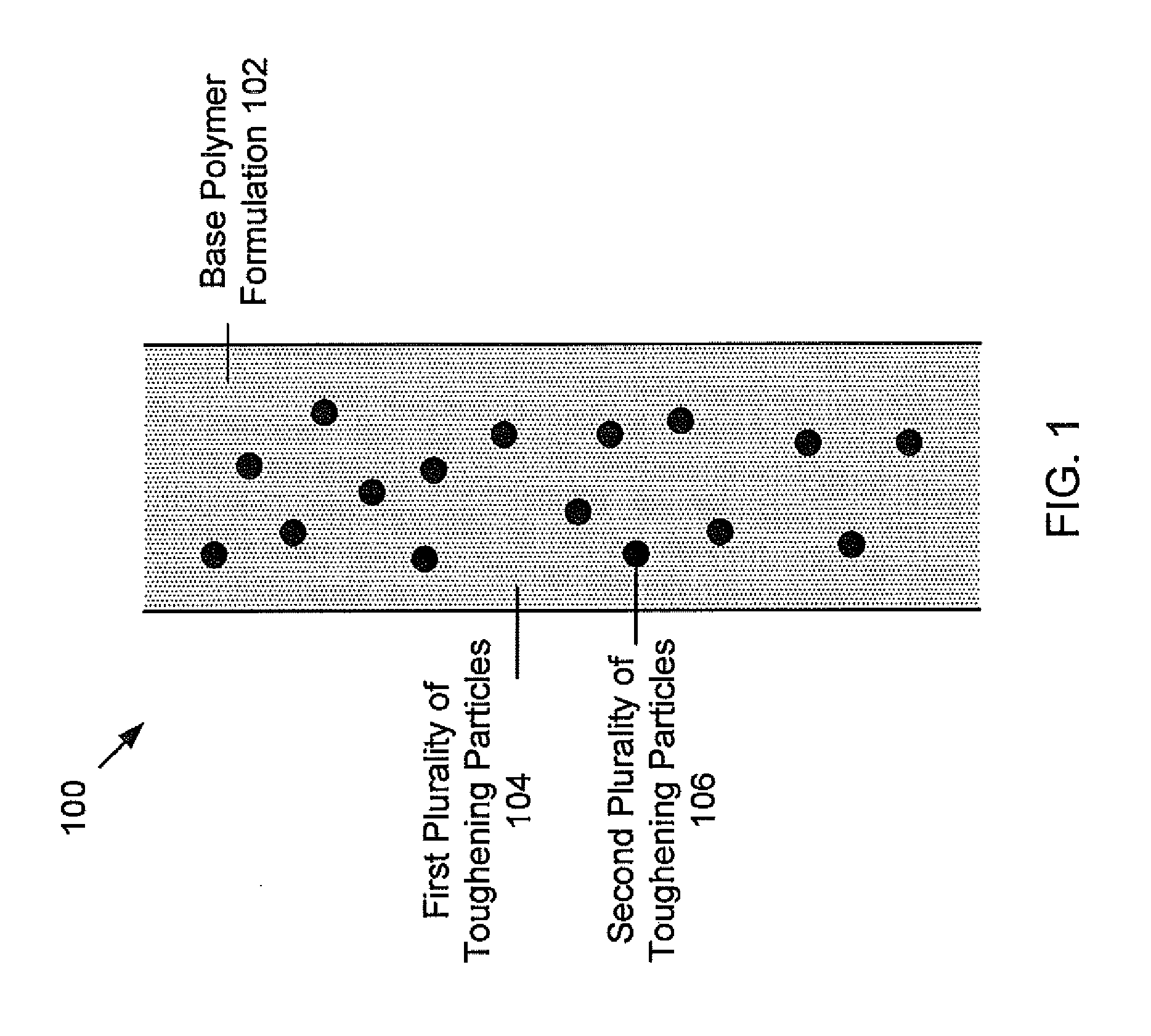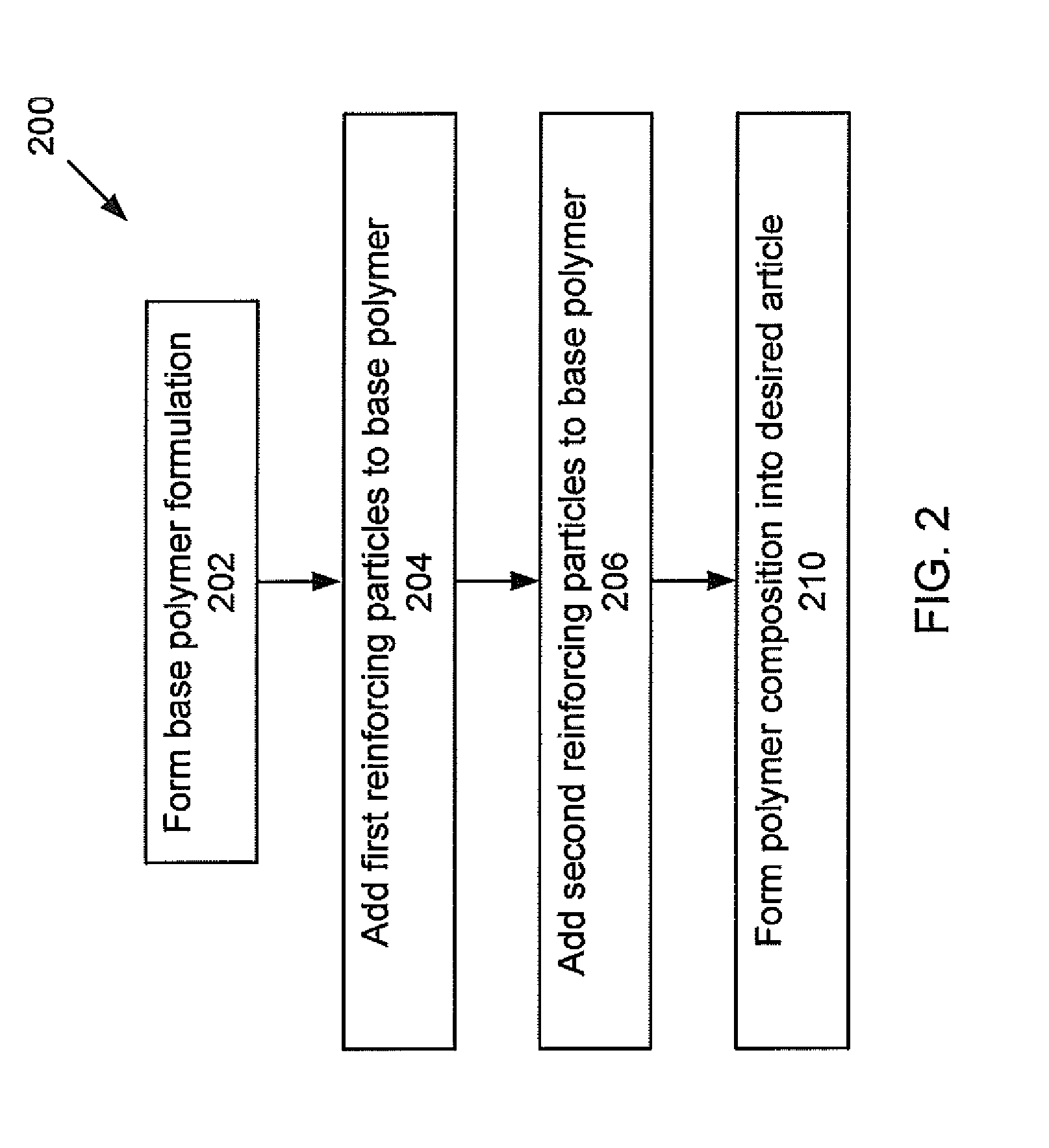Particle-toughened fiber-reinforced polymer composites
a fiber reinforced polymer and composite technology, applied in the field of particle toughening polymer compositions, can solve the problems of high thermal durability, lack of adequate thermal durability, and the possibility of significant weight loss of epoxies
- Summary
- Abstract
- Description
- Claims
- Application Information
AI Technical Summary
Benefits of technology
Problems solved by technology
Method used
Image
Examples
example 1
Particle-Toughened BMI Compositions
(a) Preparation
[0082]A base polymer composition was formed by combining a plurality of bismaleimide resins, an aliphatic BMI, a BMI co-reactant, a low viscosity epoxy, an inhibitor, and a flow control agent. These components of the polymer composition were added to a mixing vessel and mixed together until substantially homogeneous, for example, at speeds ranging between about 50 to 200 rpm. To assist the mixing process, the mixture was heated to temperatures of up to about 250° F. for times ranging between about 30 to 60 min.
[0083]Two BMI resins were employed in the composition, hexamethylene diamine bismaleimide, HMDA-BMI (GP-207R, Cymer) and 4,4-bismaleimidodiphenyl methane (Matrimid 5292B, Huntsman. The aliphatic BMI employed was toluene diamine BMI, TDA-BMI (SR 10572, Evonic). The BMI co-reactant was o,o-diallyl bisphenol A (Matrimid 5292B, Huntsman). The low viscosity epoxy employed was bisphenol F (GY 285, Huntsman). The inhibitor was 1,4-nap...
example 2
Fiber-Reinforced Composites Comprising Particle-Toughened BMI Compositions
[0091]BMI composites were prepared with toughening particles in various configurations in order to demonstrate the effects of these particles on the mechanical and thermal performance of BMI composites.
(a) Preparation
[0092]A base BMI composition was prepared as discussed above with respect to Example 1, prior to the addition of the primary core shell toughening and secondary toughening particles. Composites were formed from this base BMI composition using the filming method discussed above with respect to methods 400, 450 and FIGS. 5A and 5B. The concentration primary toughening particles, core shell rubbers, was varied between about 2 to 7 wt. % and the concentration of secondary toughening particles, polyimides, was varied between about 15 to 25 wt. %. Sixteen trial samples were investigated as follows:[0093]Trials 1-4 illustrate testing results for composites formed without primary particles in the fiber re...
PUM
| Property | Measurement | Unit |
|---|---|---|
| diameter | aaaaa | aaaaa |
| glass transition temperature | aaaaa | aaaaa |
| diameter | aaaaa | aaaaa |
Abstract
Description
Claims
Application Information
 Login to View More
Login to View More - R&D
- Intellectual Property
- Life Sciences
- Materials
- Tech Scout
- Unparalleled Data Quality
- Higher Quality Content
- 60% Fewer Hallucinations
Browse by: Latest US Patents, China's latest patents, Technical Efficacy Thesaurus, Application Domain, Technology Topic, Popular Technical Reports.
© 2025 PatSnap. All rights reserved.Legal|Privacy policy|Modern Slavery Act Transparency Statement|Sitemap|About US| Contact US: help@patsnap.com



